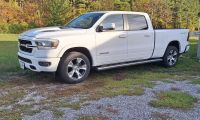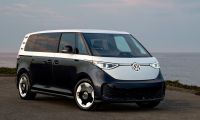In the department of: “It’s a plane, it’s a car… it’s both… the Terrafugia Transition Production Prototype completed its second flight on April 2, 2012 and it’s the closest thing you’ll find to an actual honest real flying car that should be soon enough commercially available. The company was founded in 2006 by a few MIT trained aeronautical engineers, as well as MBA's who sought to answer the challenges of personal aviation and road congestion. The Transition Roadable Aircraft is what resulted from their collaboration. And after its maiden flight, it looks as if the Transition Roadable Aircraft could be heading out your way.
A Flying Car History. Why are people so fascinated with flying cars? The answer is a little complicated but suffice it to say, our modern congested highways make a good case for a working concept. Imagine getting into your car in the morning and hearing about the traffic jams plaguing your ride to work. Well, simply enough unfold your wings and fly, baby fly! The first person to be credited as having designed the first flying car was Glenn Curtiss, although the three-winged Autoplane could only hop and never managed to fly. In 1926, even Henry Ford experimented with a flying car he called the "sky flivver". But it wasn’t until March 21, 1937 that the first true flying car took to the air. It was built by Waldo Waterman and was called the Arrowbile. The Arrowbile was powered by a Studebaker engine and could fly at 112 mph, and drive at 56 mph. Fast forward present times and the Terrafugia Transition tackles the challenge with modern means and resources.
Technically Speaking. The Transition looks more like an airplane than a car but nonetheless, it is a hybrid, in every sense of the word. As far as performance, you can expect 100 kts, or about 115 mph, with a cruising speed of 93 kts, 105 mph with a range of 425 nmi, 490 mi. The fuel consumption numbers is the best part of this project. With 35 mpg on the road, this little flying car performs better than many cars on the road. It doesn’t do too badly in the air also with 5 g/h of fuel in the air.
When Will It Be Available. According to COO Anna Mracek Dietrich: “The successful first flight of this Production Prototype Transition marks a critical move toward initial production and first delivery,” The Production Prototype phase of the Transition® program follows the Proof of Concept work which included a flying, driving Proof of Concept vehicle and was completed in 2009. The Production Prototype program includes two vehicles and is being used to develop and inform the manufacturing tool-up and compliance program necessary to begin commercial deliveries. Terrafugia will continue its testing program in preparation for first delivery, which is expected to occur within the next year.
So far this is the closest we’ve come to an actual real flying car. While there have been many concepts, some whacky, others not feasible, the Terrafugia Transition will be Atlanta and Los Angeles drivers’ best friend when taking to congested highways and is the closest thing you’ll get to flying your car.











Comments
The MIT MBAs who think that
Permalink
The MIT MBAs who think that this is marketable may not be very bright. A fender bender (or even a shopping cart impact) can render this vehicle un-airworthy. Anyone who has owned a plane (myslef included) would assess the risk of damaging a $279,000 aircraft by exposing it to common motor vehicle traffic, and come to the conclusion that a flying car is not a smart purchase. The "cool factor" for operating a flying car is just not a compelling enough reason to shell out that kind of money, especially when the performance (speed and range) falls so far below aircraft in that price range.
I would love to know who they are targeting to market this vehicle to.
One thing is for sure, I
Permalink
In reply to The MIT MBAs who think that by Rich K (not verified)
One thing is for sure, I would never venture it on the 405 freeway at rush hour either. Then again, I would do the same with any nice car. People are just not careful enough with theirs and involve us in their spatially challenged ways.
As far as the target, I feel it would do well in gated communities that have little road traveling needs. I'm thinking here someone who doesn't want to rent out a hangar and would simply drive home his or her airplane.
The bigger picture of course lies in its future general application. This is really a beta version of what a flying car will eventually be. As technology progresses, we will find ways to incorporate wings within the chassis of a car and use propellers of some sort that would retract within the body without protruding. The third versions will show a closer glimpse to how this form of transportation will look like. In the meantime, we need early adopters to buy these versions until everyday usage dictates better form and functions.
Thanks for the comment, Nicolas
I thought F1 cars had solved
Permalink
In reply to One thing is for sure, I by Nicolas Zart
I thought F1 cars had solved this many years ago by being able to driven upside down and stay attached we just need to build the roads. The military also seem to have few problems putting tanks in planes and then dropping them from the sky with a parachute to allow them to be used when they reach earth. For personal transport both in the air and on the ground in areas such as cities and urban conurbations I like the approach of the guy who is going to jump out of a helicopter from height then safely land on some cardboard boxes using a wing suit, improvements might include some propulsion, considering passengers and luggage.
Personally, I'm still waiting
Permalink
In reply to I thought F1 cars had solved by Anonymous (not verified)
Personally, I'm still waiting for my Star Trek site-to-site transport!
I thought F1 cars had solved
Permalink
In reply to One thing is for sure, I by Nicolas Zart
I thought F1 cars had solved this many years ago by being able to driven upside down and stay attached we just need to build the roads. The military also seem to have few problems putting tanks in planes and then dropping them from the sky with a parachute to allow them to be used when they reach earth. For personal transport both in the air and on the ground in areas such as cities and urban conurbations I like the approach of the guy who is going to jump out of a helicopter from height then safely land on some cardboard boxes using a wing suit, improvements might include some propulsion, considering passengers and luggage.